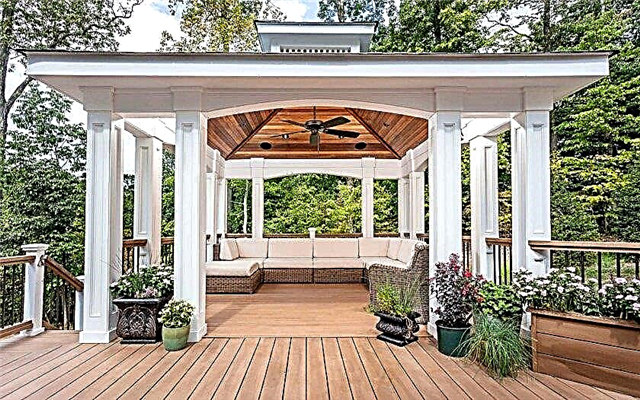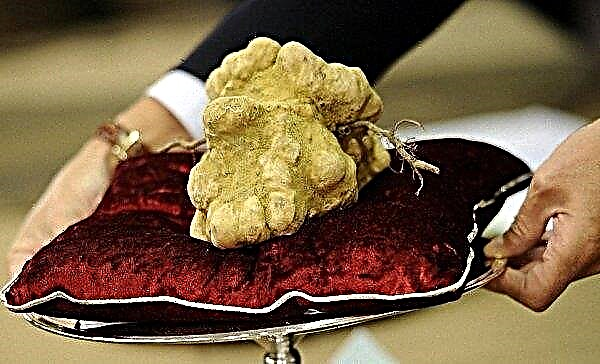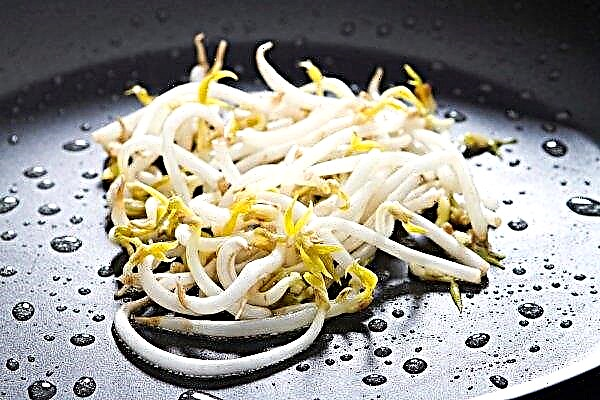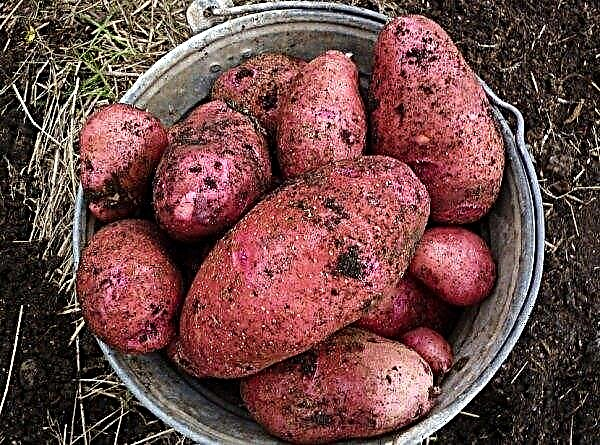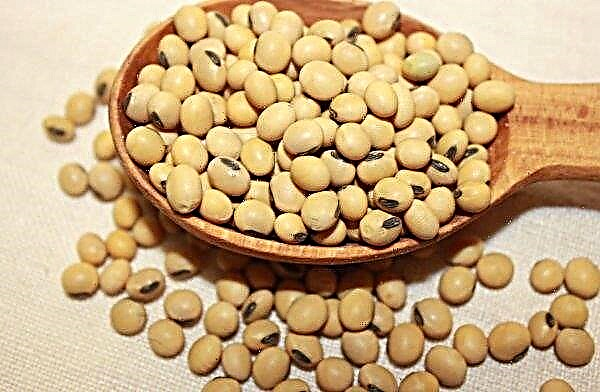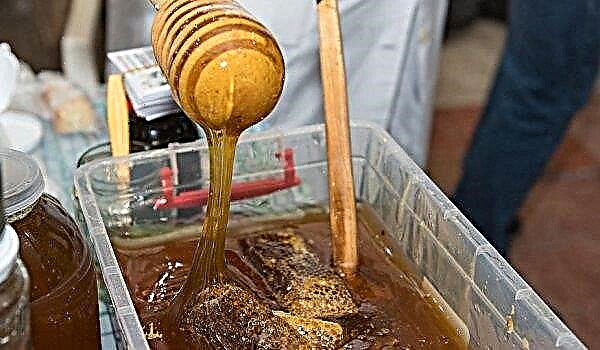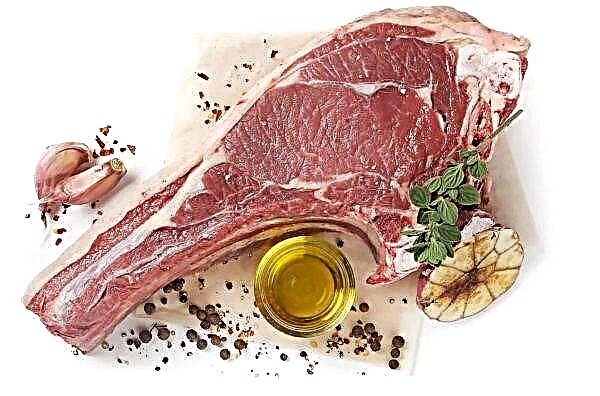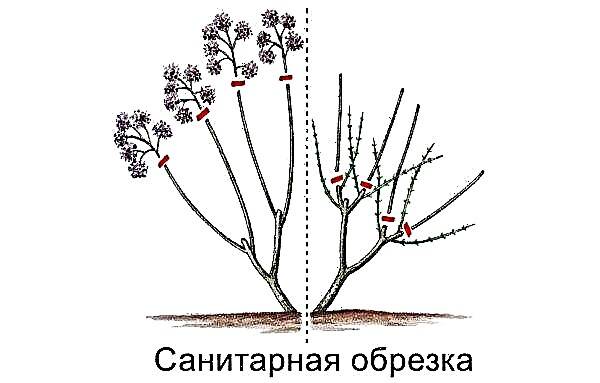The first month of autumn is the best time to plant an evergreen beautiful pine on a summer cottage. In addition to the fact that the tree will become a decoration of the garden, it, like its kindred spruce, has the ability to disinfect the air and saturate it with volatile, favorable to human health. And for a young plant to take root safely, it is important to know how to plant it. This article is dedicated to this.
Botanical Description and Features
This coniferous tree has many varieties, ranging from ordinary pine ordinary for the inhabitants of Russia, reaching a height of 40-50 m, and ending with creeping varieties used to create landscape compositions. All these plants share common botanical properties - the presence of paired needles of a bluish or densely green hue and egg-shaped cone fruits with seeds developing in them. 1 - a general view of a tree, 2 - a shortened shoot with two needles, 3 - a branch with female and male strobils, 4 - a female cone, consisting of macrostrobes, at the time of flowering, 5 - macrostrobil (a - seed scale with two ovules, b - hiding and seed scales), 6 - a branch with a wintering cone (a) and a formed cone (b), 7 - a mature ripe cone, 8 - a male spikelet consisting of macrostrobes, 9.10 - microsporophyllum, 11 - pollen, 12 - lignified seed and hiding scales with a thickened apex - shield (apophysis), 13 - lignified seed scales with 2 wings bubbled seeds, 14 - seed with a wing.
1 - a general view of a tree, 2 - a shortened shoot with two needles, 3 - a branch with female and male strobils, 4 - a female cone, consisting of macrostrobes, at the time of flowering, 5 - macrostrobil (a - seed scale with two ovules, b - hiding and seed scales), 6 - a branch with a wintering cone (a) and a formed cone (b), 7 - a mature ripe cone, 8 - a male spikelet consisting of macrostrobes, 9.10 - microsporophyllum, 11 - pollen, 12 - lignified seed and hiding scales with a thickened apex - shield (apophysis), 13 - lignified seed scales with 2 wings bubbled seeds, 14 - seed with a wing.
The shape of the crown of a tree depends on its variety, as well as on the place of growth. So, in dense coniferous forests, pine is usually, has a conical shape of a crown, while in spacious areas it looks more like a sprawling umbrella. Needles, cones and pine wood contain essential oil, which is widely used in medicine.
- Medicines made on the basis of this substance are used for the following health problems:
- diseases of the respiratory system;
- diseases of the gastrointestinal tract;
- inflammation of the oral cavity;
- dermatological diseases;
- joint diseases.

Landing rules
It is not surprising that lovers of nature and fresh air love to plant a pine tree in their own garden plot. And if you take care of this tree correctly, it grows strong and healthy without any problems.
However, it should be remembered that the pine tree has a very powerful root system, which can destroy the foundation of the building, therefore it is recommended to grow the pine tree at a distance of at least 5 meters from the buildings. In addition, it is worth paying attention to the choice of a young plant and observing the technology of its planting.
The best time for a plant transplant is mid-spring and first half of autumn. In the northern regions, due to the risk of early cold weather, pine can be planted in the summer, at the end of August. Those who prefer to plant conifers in spring should do this before the plant enters the active phase of growth, otherwise the further process of adapting it to a new place will be very painful.Important! Among the representatives of conifers, pine loves the sun more than others.
 Equally important is the choice of the right place to grow pine. Ideal if it is a hill or hill.
Equally important is the choice of the right place to grow pine. Ideal if it is a hill or hill.
Seedling Selection
When it comes to where to get the seedling, many do not even think where to go, and go to the nearest pine forest. There they dig a pine they like, plant it in their country house and are very upset when the seedling dies. Despite the fact that the conifer is unpretentious in care, a number of necessary conditions for its planting still need to be observed.
Firstly, you should not plant a fairly adult plant. The older the seedling, the worse its survival. When deciding how many years a seedling tree should be, it is better to stop for 3-5 years.Did you know? In esotericism, pine symbolizes wisdom, vast knowledge, and spiritual power.
Secondly, you need to ensure that the roots of the tree are not open for a long time. The root system begins to die if it is outdoors for more than 15 minutes. If there is such an opportunity, it is better to purchase a pine seedling in a nursery. But here you must be careful. It is better to buy a plant in a container - then you can be sure that its root system is closed. In addition, such trees are much easier to go through the adaptation process, since planting occurs with a lump of soil.
If there is such an opportunity, it is better to purchase a pine seedling in a nursery. But here you must be careful. It is better to buy a plant in a container - then you can be sure that its root system is closed. In addition, such trees are much easier to go through the adaptation process, since planting occurs with a lump of soil.
Video: How to choose pine seedlings
Soil preparation
No less thoroughly than the choice of a seedling, should also relate to the preparation of a place for planting. This is especially true for the soil in which the tree will grow. So, the pine tree feels great in sandy or sandy loamy soil. In clay soil, this coniferous plant is extremely uncomfortable, especially the first time after transplantation. However, the composition of the soil can be corrected by introducing the necessary components into the soil.
To do this, dig the top layer of the earth and mix it in equal shares with the following components:
- coarse river sand;
- peat;
- turf land.
 In addition, 50 g of nitrophoska per 1 m³ is added to the soil. If the acidity of the soil is increased, it can be reduced by adding 200 g of hydrated lime.
In addition, 50 g of nitrophoska per 1 m³ is added to the soil. If the acidity of the soil is increased, it can be reduced by adding 200 g of hydrated lime.Phased landing
The little pine will be well taken and will not hurt after planting, subject to a few simple rules:
- Before planting, the roots of the seedling should be properly wetted. But in no case should the land be washed away from them.
- Prepare a hole, focusing on the size of the pine root system. The roots of the tree should be freely located in the ground.
- Pour half a bucket of water into the pit.
- Lower the seedling into the hole so that the place where the trunk diverges to the roots remains above the soil.
- Cover with earth, lightly tamp.
- Mulch the area around the trunk.

Seed cultivation
Not all gardeners like to buy ready-made seedlings, many prefer to grow pine trees at home on their own from seeds. This method is quite troublesome, but it allows you to get a fairly large amount of planting material almost for free.
Did you know? In ancient times, it was believed that the resin that appears on the table and pine branches attracts wealth.
You can plant all the free space around the house with evergreens, the shadow of which will overshadow the garden in the hot summer months, and a pleasant smell will fill the entire space around. In addition, this is a very spectacular decoration of a personal plot.
To grow a slender tree in this way is quite possible. To do this, you need to choose a pine cone in the forest, the scales of which are fully revealed. This indicates the full ripening of seeds.
The process of preparing planting material is as follows:
- get seeds from the cone;
- trim lionfish;
- rinse the seeds with warm running water;
- soak in 5% manganese solution for 40 minutes;
- dry thoroughly.

After this, planting material should be subjected to the so-called "stratification". This is a process that mimics the wintering of seeds in a natural environment.
There are several ways to do this:
- Pour planting material into a sterile glass jar, close tightly with a lid and place in the freezer for 2-3 months.
- Mix the seeds with moistened sand and sawdust, pour into a container and leave in the basement until planting time.
- Wrap pine seeds in a cloth bag and dig them into the ground, sprinkling a large layer of snow on top.
 After the stratification period is over, you can plant the seeds in containers or greenhouses.
After the stratification period is over, you can plant the seeds in containers or greenhouses.The landing algorithm is as follows:
- Soak the seeds in wet tissue until sprouts appear (for about 4-5 days).
- Put a layer of expanded clay on the bottom of the containers for growing, pour the earth on top, leaving about 10 cm to the edges.
- Make on the surface of the furrow with a depth of 2–2.5 cm, the distance between which should be 10–15 cm.
- Gently spread the germinated seeds into the furrows at a distance of 1 cm from each other and sprinkle with soil.
- Pour, cover with glass or film on top and put in a warm place.

Depending on the variety, the first sprouts appear 20–40 days after sowing the seeds. All this time the tanks are ventilated daily, removing the glass for 10–20 minutes. When the first sprouts appear, the glass needs to be removed.
When the height of the seedlings reaches 10 cm, carry out the selection of plants, removing weak, twisted sprouts. The rest are allowed to grow up to 20 cm in height, after which the pine trees should be transplanted in rows in the "nursery" in the open air, where they will spend the next three years. During this period, seedlings need special care.
Video: How to grow pine from a cone
Care
In order for the plants to grow normally, they must be provided with a sufficient level of moisture, nutrients, as well as timely treatment of pathogens. In addition, young shoots need to be shaded from direct sunlight, especially on hot summer days.
Also, when transplanting, it is necessary to take care of good drainage, which can be broken brick or expanded clay laid at the bottom of the pit, where a small pine tree is planted.
Did you know? The ancient Egyptians used pine resin as one of the components of the composition for embalming the bodies of the dead.
Watering and feeding
Particular attention should be paid to the quality of irrigation of a young seedling, because during a period of intensive growth, a small pine tree consumes a large amount of moisture, and its roots are not yet well formed to actively absorb water from deep soil layers in the case of hot and dry summers.
After transplanting under a young plant, pour at least 2-3 liters of water. It is best to use cool water for this purpose. In order for the moisture to evaporate less and at the same time to be well absorbed into the ground, mulch should be used, which can be chopped straw, sawdust, and also needles.
Important! Contrary to popular belief, bird droppings or manure should not be used to feed pines. The consumption of a large amount of organic matter often causes irreversible damage to the roots of the tree, which leads to its death.
Need pine and additional nutrition. In this case, it is preferable to use compost or special fertilizers for coniferous crops, which are mixed in equal proportions with the soil where the seedling grows. Fertilize the young tree should be regular, as this is the key to obtaining a good and strong specimen.

Cultivation of the earth
Small pines planted in open ground require regular loosening of the soil and weeding. This provides air access to the root system and prevents stagnation of excess water, because excess moisture provokes the development of fungal diseases, and without weeding, weeds feel great next to conifers.
By themselves, they are not able to harm seedlings, but pests and bacteria that can very well damage small trees are actively propagating on weeds. Dig the soil carefully, without getting close to the tree trunk, as small roots are located near the surface of the soil and there is a high probability of damage to them.

Pruning
Growing a pine on a personal plot, many gardeners prefer to form its crown according to their taste. Pruning should not be started earlier than the pine tree will be 2 years old. The best time for this is early spring or autumn, when the movement of juices in the plant is slowed down.
To remove unnecessary branches, you should use a sharp garden secateurs. Previously, the blade must be treated with copper sulfate or a disinfectant solution. In addition to the formation of the crown, one should not forget about the cutting of dry and diseased branches.
Many selection lovers want to grow not just an ordinary pine, but a rarer tree species. Seedlings of some species are quite expensive, so gardeners resort to a more affordable option - you can plant grafted pine stalks on a young tree.
The vaccine is done in a split healthy branch and, as a rule, takes root safely. The best time to plant pine is April or August, the months when the garden is warm and humid enough.
Video: Pine pruning
Winter preparations
In the first years of its growth, pine seedlings are not yet able to survive severe frosts on their own, so you need to take care of the additional protection of small trees. To do this, the soil around the seedlings is insulated with a thick layer of peat, and the trees themselves are wrapped in burlap, agrofibre or a special net. This helps the pine trees survive even the harshest frosty winters.

Diseases and Pests
Despite the fact that the pine tree is quite strong and resistant to external factors, it can also be affected by parasites and diseases. One of the most common pine diseases is shute. With this disease, yellowing or red color of the needles with its subsequent decay is observed.
When the first signs of the shute appear, proceed as follows:
- remove affected branches;
- remove the affected needles from the site;
- to process a tree with Bordeaux liquid or sulfur-lime solution.

Another common pine disease is rust, which causes unnatural bending of branches and death of the tops of coniferous shoots. Methods of rust control - removal of affected branches and the introduction of immunostimulants into the soil.
Important! As a prevention of fungal diseases, it is necessary to periodically spray the tree with antifungal drugs used in organic farming, for example, Fitosporin. Such products do not contain aggressive chemical components and have proven themselves with regular use.
Also, pine is often affected by fusarium caused by a type of fungus. This pathology is dangerous because it primarily affects the roots of the tree, causing it to gradually dry out. The method of controlling Fusarium infection is soil treatment with anti-fungal preparations.
Conifers are also attacked by small pests, such as scale insects, worms, pine aphids, silkworms, fire flames, pine beetle, pine barbel. Parasites feed on the needles or bark of plants, sometimes hitting the plant to such an extent that it is no longer possible to save it.
The only way to combat parasites is prevention, which consists in:
- loosening the earth around the pine;
- soil disinfection;
- insecticide treatment of trees in early spring and late autumn.

Landscape design application
Due to its decorative and useful properties, as well as its pleasant aroma, some types of pine trees are very fond of using designers to create landscape compositions. One of the most popular varieties is called Sport of Repens. Such a pine tree grows in the form of a bush, the height of which reaches half a meter, and the diameter does not exceed 80 cm. This dwarf species looks great in small garden compositions and in rock gardens.
Such a pine variety as Kelpy is no less popular. This bright green bush grows up to 80 cm in height, and the diameter of the plant is not more than 120 cm. Spherical bushes are used both in a single form and in rocky gardens.Jeremy pine with a greenish-bluish crown looks very decorative. It is very tiny and looks great on flowerbeds and alpine hills. In parks and gardens you can often find Fastigiata pine with a beautiful narrow-crowned crown. Her needles have a gray-green hue, and the height reaches 14 m.
In addition, in landscape compositions you can often find a variety of Vattereri, which is distinguished by a muted bluish tint. A spherical bush grows on average up to 3 m up, but there are 7-meter specimens.
Despite the fact that growing pine on a personal plot is a matter requiring some effort, it is still worth it. Indeed, in the end, the cottage will be decorated with an evergreen tree that will delight the eye for many years. Moreover, you can choose a pine variety for each particular garden, focusing on the size of the site and the availability of free space.

